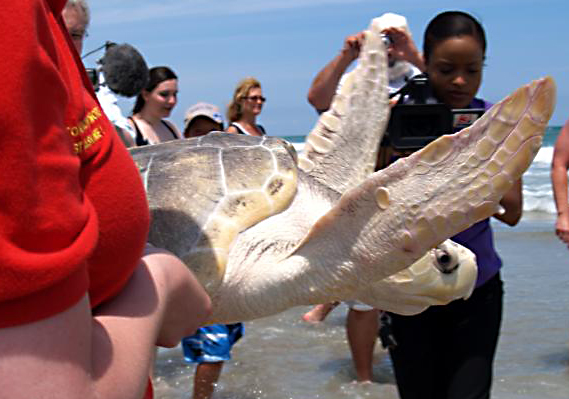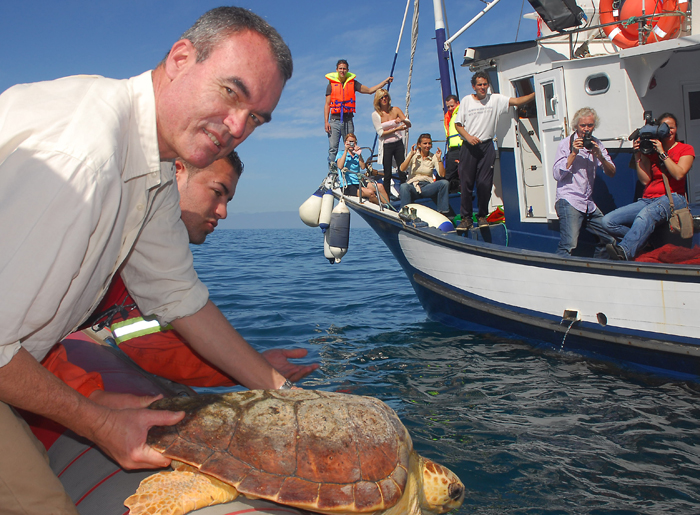Repatriation
Leatherback turtles
It is highly unlikely that repatriation would be required for this species. If however, a leatherback turtle was in need of rehabilitation and a successful outcome was acheived then release back into the sea around the UK would suffice (ideally July-October).
Hard-Shelled turtles
The intention is to keep any turtle in rehab in the UK or Ireland for as little time as possible, as soon as the animal is fit to be moved it should be transported to warmer climes for assesment for release or continuation of rehabilitation in the country selected for release.
Release of any hard-shell species back in to the sea around the UK or Ireland is not an option due to the low sea temperatures here as they will not survive.
Kemp's ridley turtle

Kemps ridley turtle T2007/01 being released in North Carolina.
The advantage with Kemp's ridley turtles is that we know where they have come from. They nest mostly (95%) on a 16-mile beach in the Mexican state of Tamaulipas and on Padre Island in the US state of Texas, and elsewhere on the Gulf Coast. The turtle has most likely been swept off the eastern seaboard of the US or the Caribbean into the North Atlantic Gyre only to be met by a south-westerly storm blowing it into the cold waters of the UK/Ireland.
Historically this species has been flown back to the US, ideally for release into the Gulf of Mexico. CITES Export and Import permits together with a valid Health Certificate and Letter of Legal Acquisition are required.
Loggerhead turtle

Loggerhead turtle T2008/35 being released at Gran Canaria.
The loggerhead turtle is distributed throughout the world so its not clear where this species may have come from. It has most likely been swept off the eastern seaboard of the US or the Caribbean into the North Atlantic Gyre only to be met by a south-westerly storm blowing it into the cold waters of the UK/Ireland. However, it may also be from a Mediterranean population.
As the point of origin is not clear the Canary Islands have been selected as a release site. The rationale for this destination is; its a relatively short flight, the islands have a favourable climate, there are good rehabilitation facilities based there, its situated close to the North Atlantic Gyre or the entrance to the Mediterranean if the turtle should be able to detect this.
Unfortunately, due to Brexit, CITES Export and Import permits together with a valid Health Certificate and Letter of Legal Acquisition are also now required for this European destination.
Green turtle
The green sea turtle can generally be found throughout the Atlantic Ocean. Currently flown to Gran Canaria for release, as loggerhead above, to pick-up the North Atlantic Gyre but this may need to be reviewed.



